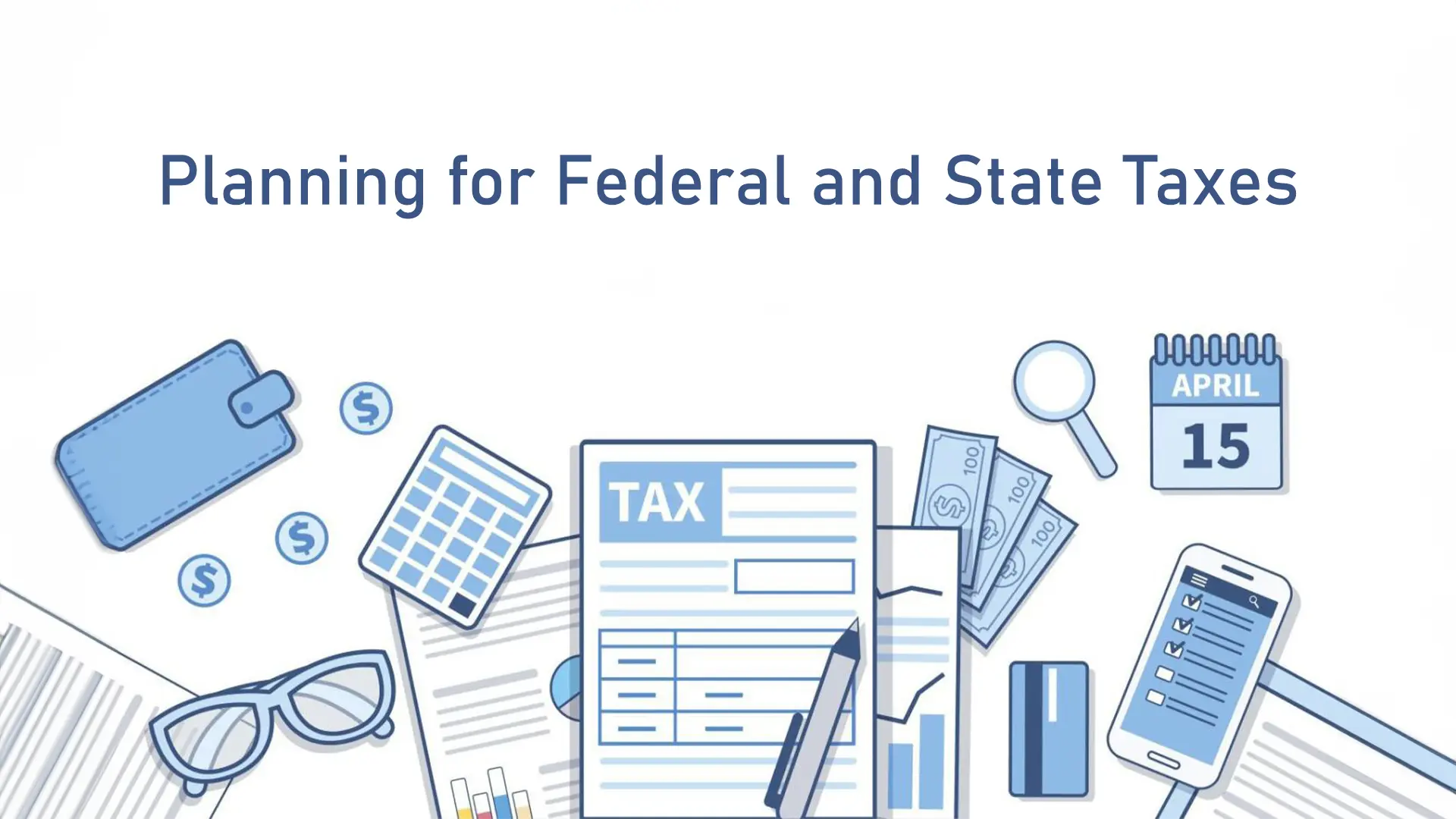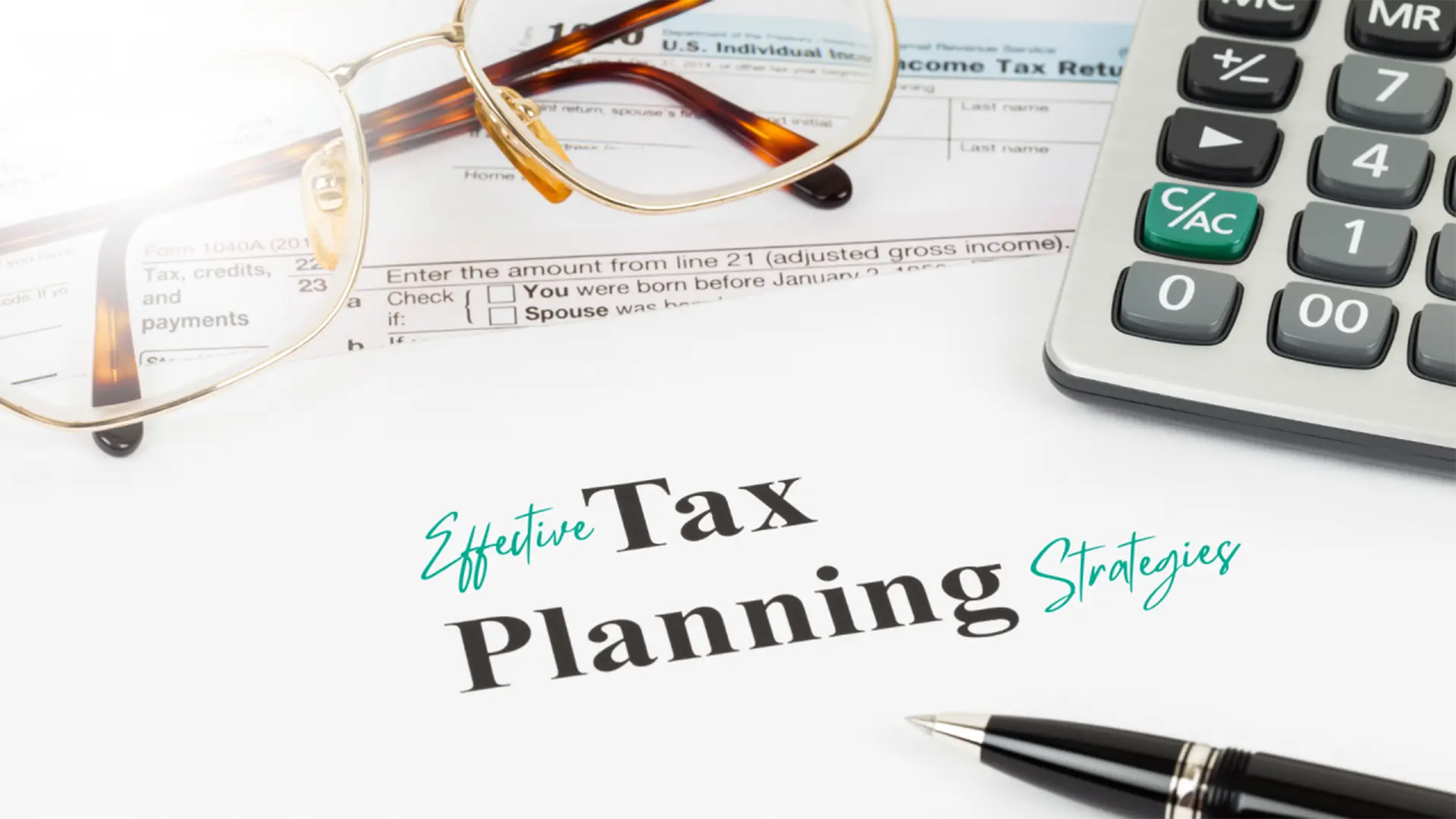Creating an effective tax strategy is crucial for anyone looking to manage their finances wisely and minimize their tax liability. By understanding and utilizing various tax planning techniques, you can significantly lower your tax bill, take advantage of available tax credits, and ensure compliance with tax laws. Whether you are an individual taxpayer or a business owner, implementing a sound tax strategy can lead to substantial tax savings.

What is Tax Planning?
Tax planning is analyzing your financial situation to ensure you take full advantage of all deductions, credits, and other tax-saving opportunities available under current tax laws. It involves understanding your tax bracket, taxable income, and potential tax benefits, and then crafting a strategy to minimize your overall tax burden.
Key Tax Strategies – Tax Deductions and Credits
Implementing key tax strategies can help reduce your taxable income and lower your tax bill. Here are six essential tax strategies to consider:
Tax Deductions
Tax deductions reduce your taxable income, which can lower your overall tax liability. Common deductions include mortgage interest, charitable donations, and medical expenses. By deducting these expenses, you can significantly decrease the amount of income tax you owe.
Tax Credits
Tax credits directly reduce the amount of tax you owe, dollar for dollar. Popular tax credits include the Earned Income Tax Credit (EITC) and the Child Tax Credit, both of which can substantially help individuals and families manage their tax obligations. Understanding the difference between tax deductions and tax credits is crucial for effective tax planning.
Retirement Accounts
Contributing to retirement accounts such as a 401(k) or an IRA can provide significant tax benefits and is an important consideration in estate planning. These contributions are often tax-deductible, which lowers your taxable income and helps you save for the future.
Reducing Your Taxable Income
Understanding Tax Withholding
Tax withholding refers to the amount of federal income tax withheld from your paycheck. By adjusting your withholding, you can manage your tax liability throughout the year and avoid a large tax bill or refund when you file your tax return.
For professional advice on how to optimize your tax withholding, consider scheduling an appointment with Ian Borbolla, Founder and Principal CPA at Digital Tax Group.
Planning for Federal and State Taxes

Federal Tax Planning Strategies
Understanding federal tax planning strategies is essential for minimizing your tax liability. Federal income tax rates are progressive, meaning that higher income levels are taxed at higher rates. By knowing your tax bracket, you can plan effectively to reduce your taxable income and take advantage of lower tax rates. For instance, maximizing contributions to retirement accounts like a 401(k) or IRA can lower your taxable income, placing you in a lower tax bracket and reducing the amount of taxes you owe.
State Tax Considerations
State taxes vary significantly from one state to another, impacting your overall tax situation. Some states have no income tax, while others have high tax rates. It’s crucial to understand the specific tax laws in your state and how they affect your tax planning and tax strategy. For example, certain states offer tax credits and deductions for things like education expenses or energy-efficient home improvements. Taking the time to research and claim these state-specific tax benefits can lead to significant tax savings.
Advanced Tax Planning Strategies
Understanding your tax filing status and following the tax rules are crucial for ensuring compliance and maximizing your potential tax refund. Additionally, staying informed about the estate tax and finding legal ways to avoid paying taxes can lead to a significant reduction in your tax liability by understanding the tax code. Properly managing your tax information is an effective way to avoid common pitfalls and ensure you’re taking every possible step to achieve a reduction in your tax.

Starting a Business
Starting a business can provide numerous tax benefits and is a powerful strategy to lower your tax bill. As a business owner, you can deduct a wide range of business expenses, such as office supplies, travel, and even a portion of your home office. Additionally, the structure of your business entity—whether it’s a sole proprietorship, partnership, LLC, or corporation—can influence your tax liability. Consulting with a tax professional can help you choose the best business structure to maximize your tax advantages.
Claiming Tax Credits
Tax credits are a valuable tool for reducing your tax liability. Unlike deductions, which reduce your taxable income, tax credits reduce the amount of tax you owe directly, offering an effective way to reduce your tax bill. The Earned Income Tax Credit (EITC) and Child Tax Credit are two examples that can significantly lower your tax bill. To maximize tax savings, it’s essential to understand which credits you qualify for and how to claim them correctly.
For expert advice on claiming tax credits and optimizing your tax strategy, visit the Digital Tax Group Compliance page.
Taking the Standard Deduction vs. Itemizing
Deciding whether to take the standard deduction or itemize deductions is a critical component of your tax strategy. The standard deduction is a fixed amount that reduces your taxable income, while itemizing allows you to deduct specific expenses. Both methods can help you minimize tax owed. If your total itemized deductions exceed the standard deduction, itemizing can lead to greater tax savings. Common itemized deductions include mortgage interest, medical expenses, and charitable contributions. Evaluating your deductions each tax year will help you choose the most beneficial option.
2023 vs. 2024 tax brackets: Married filing jointly
| 2023 | 2024 |
| 10%: $0 to $22,000. | 10%: $0 to $23,200. |
| 12%: $22,001 to $89,450. | 12%: $23,201 to $94,300. |
| 22%: $89,451 to $190,750. | 22%: $94,301 to $201,050. |
| 24%: $190,751 to $364,200. | 24%: $201,051 to $383,900. |
| 32%: $364,201 to $462,500. | 32%: $383,901 to $487,450. |
| 35%: $462,501 to $693,750. | 35%: $487,451 to $731,200. |
| 37%: $693,751 or more. | 37%: $731,200 or more. |
2023 vs. 2024 tax brackets: Single filers
| 2023 | 2024 |
| 10%: $0 to $11,000. | 10%: $0 to $11,600. |
| 12%: $11,001 to $44,725. | 12%: $11,601 to $47,150. |
| 22%: $44,726 to $95,375. | 22%: $47,151 to $100,525. |
| 24%: $95,376 to $182,100. | 24%: $100,526 to $191,950. |
| 32%: $182,101 to $231,250. | 32%: $191,951 to $243,725. |
| 35%: $231,251 to $578,125. | 35%: $243,726 to $609,350. |
| 37%: $578,126 or more. | 37%: $609,351 or more. |
Standard Deduction
| Filing Status | Standard Deduction 2023 | Standard Deduction 2024 |
| Single | $13,850.00 | $14,600.00 |
| Married, filing jointly | $27,700.00 | $29,200.00 |
| Married, filing separately | $13,850.00 | $14,600.00 |
| Head of household | $20,800.00 | $21,900.00 |
Optimizing Tax Withholding
Understanding Tax Withholding
Tax withholding is the amount of federal income tax withheld from your paycheck by your employer. Properly managing your tax withholding can help you avoid a large tax bill or refund when you file your tax return. By adjusting your withholding allowances on your W-4 form, you can ensure that the right amount of tax is deducted from your paycheck throughout the year.
Adjusting Your Withholding for Tax Savings
If you find that you are either paying too much in taxes or receiving a substantial refund, it may be time to adjust your withholding and consult six tax strategies to optimize your tax situation. Increasing your allowances will reduce the amount of tax withheld, thereby increasing your take-home pay. Conversely, decreasing your allowances will result in more tax being withheld, which can help you avoid owing money at the end of the tax year. For precise adjustments, it’s advisable to use the IRS withholding calculator or consult with a tax professional.
Managing Retirement Accounts
Tax Benefits of Retirement Accounts
Contributing to retirement accounts such as 401(k)s and IRAs provides significant tax benefits. Contributions to these accounts are typically tax-deductible, reducing your taxable income and lowering your tax liability. Additionally, the earnings on these accounts grow tax-free until you withdraw them during retirement, at which point they are taxed as ordinary income.

Maximizing Contributions
To maximize tax savings, it’s crucial to contribute the maximum allowable amount to your retirement accounts. For instance, in 2024, the contribution limit for a 401(k) is $22,500, with an additional catch-up contribution of $7,500 for those aged 50 and over. Similarly, the IRA contribution limit is $6,500, with a $1,000 catch-up contribution. Making the most of these contributions can significantly reduce your taxable income and enhance your retirement savings, providing valuable tax incentives.
For more information on retirement planning and tax strategies, consider booking an appointment with Ian Borbolla, Founder and Principal CPA at Digital Tax Group.
Conclusion
Implementing a robust tax strategy involves understanding and utilizing various tax planning techniques to minimize your tax liability and maximize your tax savings. One strategy may include leveraging available tax incentives. By carefully managing your tax deductions, credits, and retirement contributions, you can effectively lower your tax bill. Additionally, staying informed about federal and state tax laws, and seeking professional tax advice, can further enhance your tax planning efforts.
For more information on tax preparation and compliance services, visit the Digital Tax Group Compliance page. Start planning your tax strategy today to take control of your financial future and ensure you are making the most of all available tax-saving opportunities.



